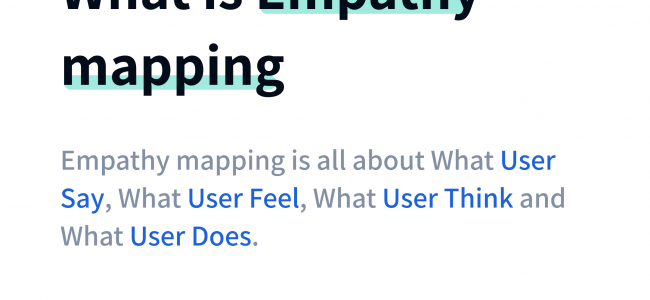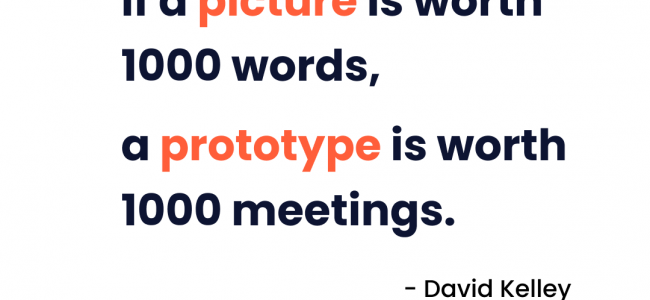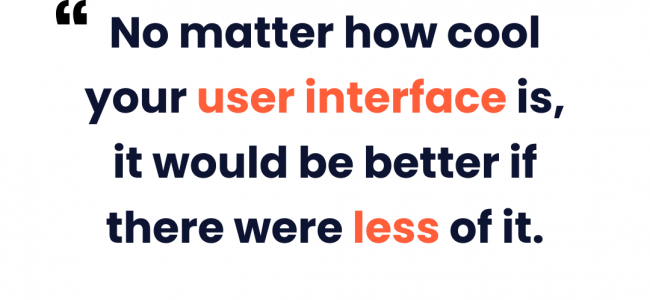Doing the design course is one thing, but the real challenge is catching everything you’ve learned on the course and applying it to a new career.
UX design isn’t like any other vocation.
It’s not just going to work and doing the 9 to 5; it’s what you do outside of your working hours—how you improve, and how do you network.
There’s a lot more to it.
Thoughts? 💬
#ux #userexperience #uxdesign #uxdesigner #designerlife
UX design isn’t like any other vocation.
It’s not just going to work and doing the 9 to 5; it’s what you do outside of your working hours—how you improve, and how do you network.
There’s a lot more to it.
Thoughts? 💬
#ux #userexperience #uxdesign #uxdesigner #designerlife
Post
User Stories and Use Cases in UX Design 💡
User Stories are centered on the result and the benefit of the thing you're describing.
Whereas, Use Cases can be more granular and describe how your system will act.
Thoughts? 💬
#ux #uxdesign #userexperience #uxresearch #uidesigner
User Stories are centered on the result and the benefit of the thing you're describing.
Whereas, Use Cases can be more granular and describe how your system will act.
Thoughts? 💬
#ux #uxdesign #userexperience #uxresearch #uidesigner
So how do we define a prototype?
The most basic definition goes like this: “A simulation or sample version of a final product, which is used for testing prior to launch.”
The goal of a prototype is to test products (and product ideas) before sinking lots of time and money into the final product.
Prototyping is essential for resolving usability issues before launch.
It can also reveal areas that need improvement.
Once a draft of your product idea is in the hands of real users, you’ll finally see how they want to use the product.
You can then go back and adjust your initial guesswork. (Jerry Cao, on UXPin)
#uxdesigner #prototype #uidesigner #designerlife
The most basic definition goes like this: “A simulation or sample version of a final product, which is used for testing prior to launch.”
The goal of a prototype is to test products (and product ideas) before sinking lots of time and money into the final product.
Prototyping is essential for resolving usability issues before launch.
It can also reveal areas that need improvement.
Once a draft of your product idea is in the hands of real users, you’ll finally see how they want to use the product.
You can then go back and adjust your initial guesswork. (Jerry Cao, on UXPin)
#uxdesigner #prototype #uidesigner #designerlife
How to cheat your way into a design job?
In the design industry, even high-school dropouts can still get hired and be successful as a designer.
It’s not about your resume. It’s entirely about your portfolio.
You might have 10 years of experience as a designer but with a poor portfolio that doesn’t reflect it.
Or you might have 2 years of experience with a terrific portfolio that gets you hired at a top company right away.
In this way, you can cheat the system.
Create a compelling portfolio with excellent case studies and nobody will ever know, or care, whether you have a design degree.
You’ll be ten steps ahead of the person with a master's in UI/UX design and five years of experience – because they either haven’t updated their portfolio, or they have and it’s not good.
Your portfolio is the biggest investment you can make in your career.
Doing your best work makes your portfolio better. Making your portfolio better leads to more great work. And the circle continues.
#uxdesigner #portfolio
In the design industry, even high-school dropouts can still get hired and be successful as a designer.
It’s not about your resume. It’s entirely about your portfolio.
You might have 10 years of experience as a designer but with a poor portfolio that doesn’t reflect it.
Or you might have 2 years of experience with a terrific portfolio that gets you hired at a top company right away.
In this way, you can cheat the system.
Create a compelling portfolio with excellent case studies and nobody will ever know, or care, whether you have a design degree.
You’ll be ten steps ahead of the person with a master's in UI/UX design and five years of experience – because they either haven’t updated their portfolio, or they have and it’s not good.
Your portfolio is the biggest investment you can make in your career.
Doing your best work makes your portfolio better. Making your portfolio better leads to more great work. And the circle continues.
#uxdesigner #portfolio
UX book I recommend for the Usability 👇
These first ones are just ones you should have read out of self-respect because people will mention them at you and you will want to nod sagely rather than have a panic attack.
1. "Prioritizing Web Usability" — by the one and only Jakob Nielsen
2. "The Design of Everyday Things" — by Don Norman, obvs.
3. "Don’t Make Me Think, A Common Sense Approach to Web Usability" — by Steve Krug
4. "About Face: The Essentials of Interaction Design" — by Alan Cooper
Next, two books that go nicely together — one from the view of design psychology and one from the view of methods for testing and researching the design. Both quite high-level overviews, but a brilliant way to scan a complex field and decide where you want to navigate to next.
1. "Universal Methods of Design" — by Bruce Hanington
2. "Universal Principles of Design" — by William Lidwell
Which is your favourite book? Let me know in the comments 💭
These first ones are just ones you should have read out of self-respect because people will mention them at you and you will want to nod sagely rather than have a panic attack.
1. "Prioritizing Web Usability" — by the one and only Jakob Nielsen
2. "The Design of Everyday Things" — by Don Norman, obvs.
3. "Don’t Make Me Think, A Common Sense Approach to Web Usability" — by Steve Krug
4. "About Face: The Essentials of Interaction Design" — by Alan Cooper
Next, two books that go nicely together — one from the view of design psychology and one from the view of methods for testing and researching the design. Both quite high-level overviews, but a brilliant way to scan a complex field and decide where you want to navigate to next.
1. "Universal Methods of Design" — by Bruce Hanington
2. "Universal Principles of Design" — by William Lidwell
Which is your favourite book? Let me know in the comments 💭
Lorem Ipsum is lazy.
Don't use it in your UI design projects.
Use the actual content that will be used. This way you will actually know if your work is doing its job correctly.
Don't use it in your UI design projects.
Use the actual content that will be used. This way you will actually know if your work is doing its job correctly.
Akash Nagaraj: So true. Same applies whit John Doe n all of those place holder texts too
I remember when I started at my job and my boss and I were arguing (discussing) Mac vs Windows. He's Pro Mac and I was Pro Windows.
Then he said something along the lines of, "How do you expect to design good experiences (UX) when you're not even having a good experience?" 😞
Then he said something along the lines of, "How do you expect to design good experiences (UX) when you're not even having a good experience?" 😞
These skills are still the “Top 10 Tech Skills” in demand:
1. Cloud /Amazon Web Services (AWS)
2. Cybersecurity
3. Machine Learning/AI
4. Mobile Development
5. SEO/SEM Marketing
6. Data Visualization
7. Data Engineering/Science
8. UI/UX Design
9. Blockchain
10. IoT
#uidesigners #uxdesigners
1. Cloud /Amazon Web Services (AWS)
2. Cybersecurity
3. Machine Learning/AI
4. Mobile Development
5. SEO/SEM Marketing
6. Data Visualization
7. Data Engineering/Science
8. UI/UX Design
9. Blockchain
10. IoT
#uidesigners #uxdesigners
No matter how cool your user interface is, it would be better if there were less of it.
This quote belongs to Alan Cooper, one of the pioneers of UX design, also known for his books About Face: The Essentials of Interaction Design.
Designers often overwhelm user interfaces with unnecessary functionality and forget about the main problem that they try to solve — the user problem. Nowadays, we have hundreds of ways to solve user problems without designing a mobile app. Try to think about the problem you try to solve, not the technological solution.
This quote belongs to Alan Cooper, one of the pioneers of UX design, also known for his books About Face: The Essentials of Interaction Design.
Designers often overwhelm user interfaces with unnecessary functionality and forget about the main problem that they try to solve — the user problem. Nowadays, we have hundreds of ways to solve user problems without designing a mobile app. Try to think about the problem you try to solve, not the technological solution.










